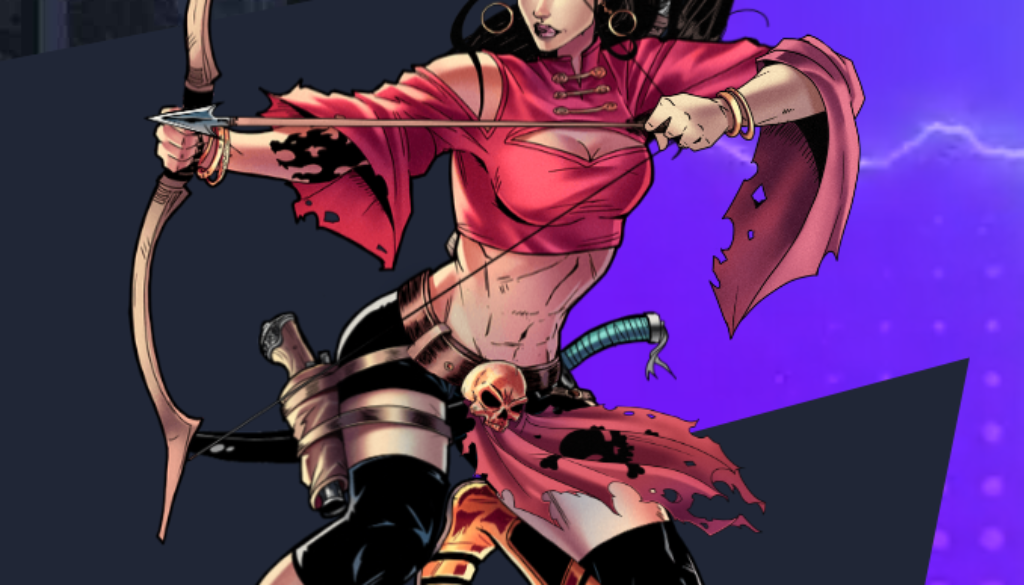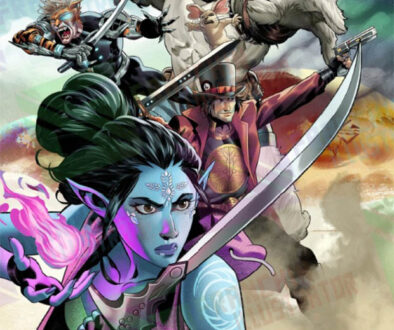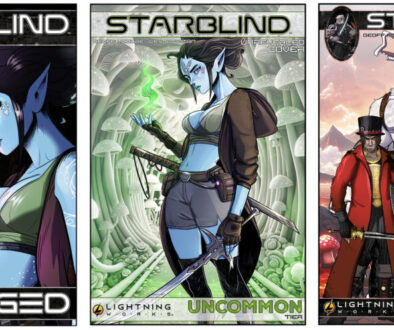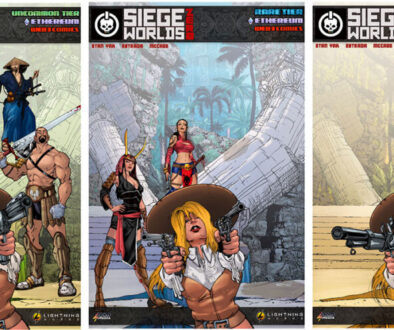Your Traditional Comic Book Craft Will Serve You Well in the NFT Space
The world of comic NFTs is an exciting new frontier for many comic artists. This is not just for the revenue potential it presents but NFTs present creatives with an artistic challenge: working in a new democratized medium at the frontier innovation that bestows more power and creative license in their work. For the first time, NFTs also give comic artists direct access to a community of enthusiasts that they can ‘cultivate’ with their craft without mediation from top industry players.
Like other blockchain applications elsewhere, the use of blockchain-based comics is breaking down entrenched and centralized power structures to which many comic artists have been beholden for generations.
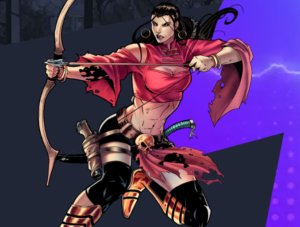
Comic artists are rapidly embracing this new form of expression, porting their existing IPs into the metaverse and creating new metaverse-focused comic IPs for a new audience for which the ownership of a digital asset is as meaningful as owning a real asset.
NFTs provide proof of ownership and provenance, a transaction trail, a well-structured royalty scheme that can keep on giving for superb comic NFTs as well as an opportunity to create a vibrant community and ecosystem of apps, games, and experiences that legacy comic books cannot offer. Comic NFTs also benefit buyers in a meaningful way. Owners of NFTs can resell them in marketplaces like OpenSea and Rarible or even create new experiences around them thereby expanding the ecosystem and furthering the chain of growth and evolution.
In the comic space, NFTs have the potential to be very beneficial for the community. For once, they offer real utility and value to their fanbase beyond the typical meaningless cartoony JPEGs that we have come to associate with NFTs. Comic collectors are also able to collect valuable comics that can retain their value and be resold for a premium, a significant improvement from the comic book “collectibles” of the 90s and 2000s that ended up collecting dust on the shelves and eventually proved worthless.
If you are a comic artist, you are probably thinking about how to extend your creative streak into this new medium to grow the reach of your work, discover new audiences and collaboration opportunities, and generate significant revenues from your work. In this article, we look at ways in which a comic artist can make the most of the NFT space and attain the level of success that has been seen by some of the NFT collections that have impacted thousands of fans and generated millions of dollars in revenues.
The most successful NFT comics get a lot of stuff right, from the artistry to the effectiveness with which you can build a passionate community around their work and the technical proficiency for building a flawless NFT ecosystem.
Grow a Following Around Your NFT
To be successful, every comic NFT needs a tribe of passionate fans. If it is an existing comic IP that already has a loyal and passionate readership, it is easier to ‘port’ that community into the metaverse and get them to buy into your NFT.
Syndicated comic artists can easily transport the fanbase of their legacy work into their NFTs. That is, however, not the case with many indie artists and upstarts.
Oftentimes, many indie comic artists will have to build their fandom from scratch, especially if their comic book is not yet as widely known in the community.
There are organic and inorganic ways of building a community around your comic IPs and comic NFTs. If you have a small tribe of fans, you can begin by roping them into the comic development process on social media channels, Facebook groups, or platforms such as Discord channels. This core tribe of believers will be instrumental in taking your comic NFTs into the mainstream comic community.
Twitter and Discord are the most organic platforms for building a buzz and a following for your comic NFTs. A lot of successful NFTs were spawned out of Discord channels.
There is already a raucous NFT community on Twitter that is eager to try out new projects and ideas. These are the people you can reach out to through consistent and quality engagement and outreach.
Growing your NFT fanbase the organic way is always the most preferable as you can rope in true believers rather than “fly by night” fans with only a passing interest in your work. It is a lot more fun to grow a community organically through engagement that brings on board people with shared interests.
Organic engagement can take many forms. Beyond social media, you can also organize games and online events. You can also grow your comic community through offline comic events and festivals where you get to interact with other comic fans face to face and pitch your ideas.
The other route for growing a following is by following inorganic channels such as pay-per-click ads and paying influencers in the NFTs and comic space to publicize your comic NFTs. This may not have the personal touch of organic marketing and hardnosed engagement but it has a much wider reach and will prove more effective over the long run.
If you are starting a comic NFT, it would be prudent to exploit both channels and draw on the synergy of organic and inorganic marketing. This will considerably ramp up your chances of success in your outreach.
Building Your NFT Collections
Successful comics combine narrative and solid artwork. Here are some key aspects when creating a winning comic NFT: –
Character Design
One of the features of some of the most iconic comic characters is recognizability. They have such a unique aspect that fans can tell them apart even from their silhouettes. You need to create a character with a unique look and style. There are tons of NFTs already in existence so your comic character should stand out.
Here are some of the key factors to keep in mind when designing your comic characters for NFTs: –
Recognizability: Your comic NFT character should be easily recognizable by other users. They should be able to easily tell it apart from the sea of NFTs streaming into the metaverse. A good example of a recognizable NFT is the BAYC apes. Whatever their iteration, colors, or clothing, they are easily recognizable as the bored apes thanks to their unique and distinctive style.
Utility: Comic books are primarily meant to entertain but they are also a collector’s item. NFTs can unlock even more possibilities. Beyond creating recognizable and relatable comic characters for your NFTs, you can also transform your NFT into an ecosystem with perks such as passes, memberships, and much more thereby tying in extra tangible value to the comic.
Get More Out of the Customizable Areas
Comic NFTs are a form of digital art. Creating them often entails adding various layers of illustration. The layers should make a harmonious blend. Artistically and visually, the comic NFT should be appealing.
The layers of the illustration should match evenly. When designing your characters, keep in mind the focal points in every page layout that you want to highlight to the reader. What prominent feature of the character do you want people to notice the first time they lay their eyes on a comic book page?
The focal point in any comic character or illustration is the area of interest that you want the eyes of the readers or viewers to automatically take note of. Every character or panel in a comic book should have a focal point. The focal point should also seamlessly connect to the comic book’s overall plot.
Usually, the eyes of your readers will be automatically drawn to the faces of your comics or the main character in the panel. If you want to highlight a character(s) in a comic panel, then you can make their faces and facial expressions clearly visible to create that focal point.
Playing with Color Palettes
Colors are key in comics. While character design and recognizability trump colors, a comic book must still have a good blend of colors. You can easily identify an iconic comic character with just a few colors. They are also easily recognizable even when the colors are altered.
Choose the appropriate color tone depending on the feeling you want to convey with the comic characters. If you want a cheerful atmosphere, go for brighter colors.
Pick a color each for the primary and secondary color groups so you don’t get mixed up in your color selection. Work out the various shades for your primary and secondary colors. Once you have chosen the distinct colors, work out the variations. Determine the shades that you will apply to each of the layers in the comic. Using different shades of colors on the disparate layers adds some depth to the comic NFTs. The backgrounds, for instance, can have a lighter palette while the characters have bright colors where you need to focus on the character. Colors will also play an important role in defining the focal point of the comic. A poor color choice will steal the limelight from the focal points in your comic NFTs and this can impact the plot.
